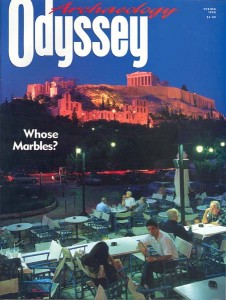How the Marbles Changed History
Sidebar to: Lord Elgin’s Marbles
The real reason the British government took a decade to purchase the Parthenon sculptures had less to do with Lord Elgin than with European understanding of antique art.
When the marbles arrived in Britain, public reaction ranged from sheer ecstasy to outright hostility. On seeing the collection for the first time, the great Neoclassical sculptor Antonio Canova regretted that he was too old to begin his career all over again. Benjamin West, president of the Royal Academy, described the Selene horse head from the east pediment (see photo of marble horse head) as a miracle of “living flesh turned to stone.” At the same time, Richard Payne Knight, leader of the prestigious Society of Dilettanti and England’s most respected classical connoisseur, disparaged the Parthenon marbles as second-rate sculptures. And Elgin’s severest critic, the Romantic poet Lord Byron, assailed him repeatedly in poetic diatribes for profaning an ancient sanctuary. To Byron, the desecrated marbles became “Phidian freaks, misshapen monuments and maim’d antiques.”
Already a library member? Log in here.
Institution user? Log in with your IP address.

